Vegan Globetrotter is supported by our audience. When you purchase through one of our links, we may earn a small affiliate commission. As an Amazon Associate I earn from qualifying purchases. Your cost is not affected.
==================
Step into the future of modern kitchens with Induction Cooking. Say goodbye to the hassles of traditional stovetops and welcome a new era of efficiency, precision, and style. In this article, we’ll explore the magnetic allure of induction technology, unlocking its secrets to transform your cooking experience.
From its ability to heat pots and pans directly with electromagnetic fields to its role in promoting sustainability and its integration with smart cookware designs, induction cooking offers a various of benefits that are revolutionizing the way we approach cooking in the modern kitchen. So, buckle up as we embark on a journey to uncover the wonders of induction cooking for modern kitchens.
Induction Cooking for Modern Kitchens: A Key Player in the Energy Transition and Its Impact on Modern Kitchens

Induction cooking is quickly becoming a game-changer for those looking to make their kitchens more sustainable and energy-efficient. As the world grapples with pressing climate change and energy conservation issues, transitioning from traditional gas and electric stovetops to induction cooking surfaces presents a viable solution.
This innovative cooking method harnesses electromagnetic energy to heat cookware directly, cutting down on wasted heat and ensuring that energy is directly translated into cooking power. The adoption of induction technology aligns with environmental initiatives and meets the growing demand for precision and speed in cooking.
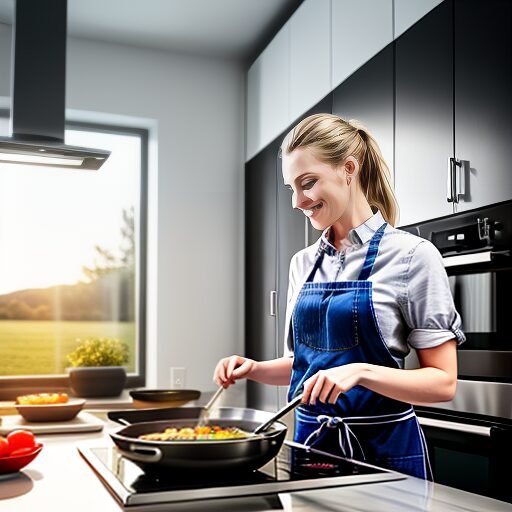
Key Takeaways
- Induction cooking heats your pots and pans directly using electromagnetic fields, marking a big change in stove technology. And It makes your kitchen more energy-efficient in various ways, like using less energy and keeping your kitchen cooler.
- Induction cooking supports a move towards cleaner energy by using less fossil fuels, backing renewable energy, and improving how electricity grids work.
- Induction cookware keeps up with technology, even if it seems pricier at first. But in the long run, it saves you money on energy and lasts longer.
- When you switch to induction cooking, think about things like how much it costs upfront and if it meets safety standards.
- Seeing how induction cooking works in real life, like in restaurants or nationwide energy use, shows its potential for saving energy and making a big impact.
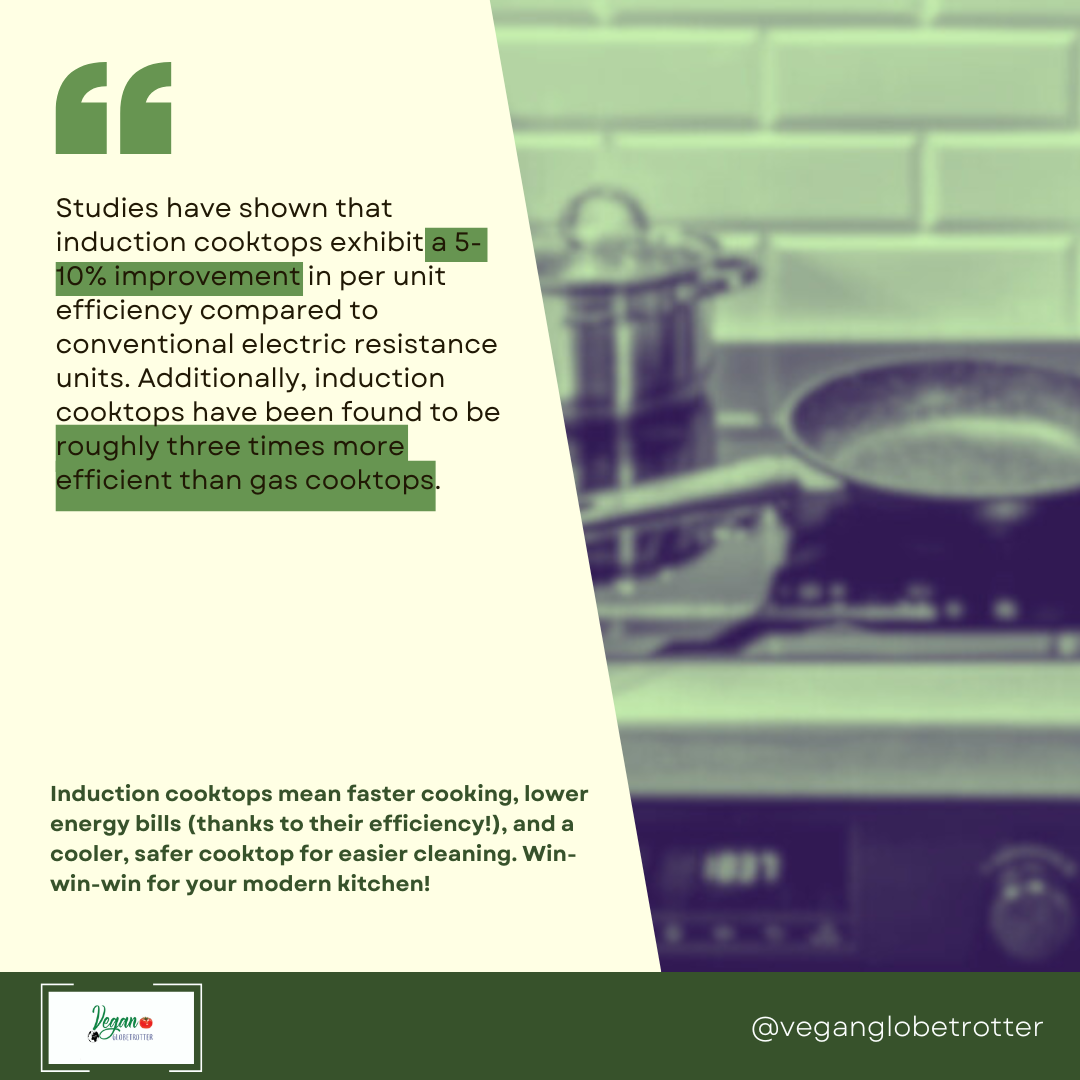
Unlocking the Power: Mastering the Fundamentals of Induction Cooking
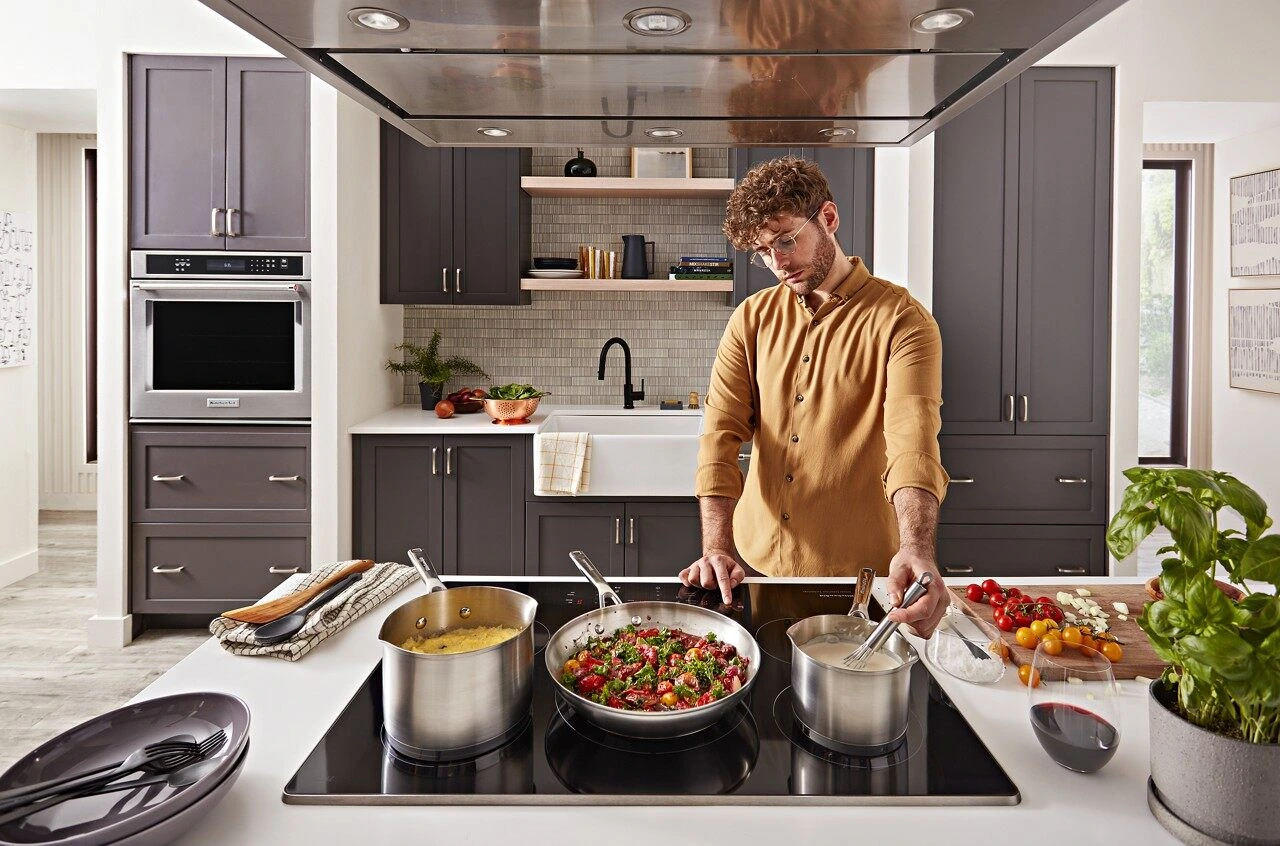
Induction cooking represents a significant shift in stovetop technology, utilizing electromagnetic fields to heat your pots and pans directly. Here’s how you can tap into the efficiency of induction cooking:
Cookware Requirements
For induction cooking, you need cookware with a magnetic base. Choose pots and pans crafted from cast iron or magnetic stainless steel. You can check compatibility by simply seeing if a magnet sticks firmly to the bottom.
How It Works
When you fire up an induction cooktop, what happens is this: electricity zips through a coil hiding under the smooth glass, creating a magnetic field in the process. This field induces an electric current in your cookware, which in turn produces heat.
Remarkably, the cooktop remains cool; the reaction in the cookware generates the warmth. You’ll notice that induction cooking allows for fast and responsive temperature adjustments. Since the cookware itself generates the heat, changes in the electric current translate into immediate temperature changes.
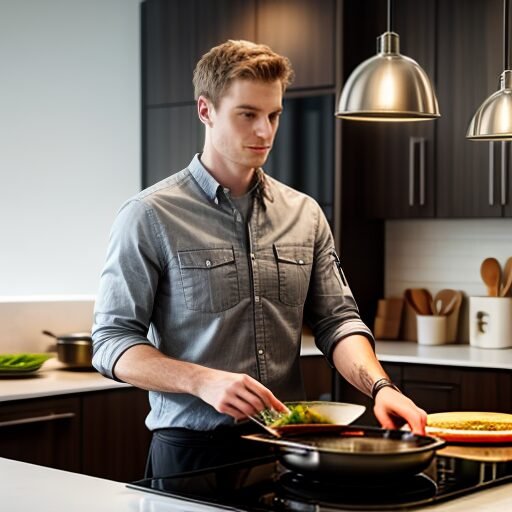
Did You Know?
You might notice a little hum or buzz coming from some induction cooktops as you whip up your culinary masterpieces.
Advantages of Induction Technology in Energy Efficiency
Induction cooking technology revolutionizes your kitchen experience by significantly enhancing energy efficiency. It ensures less energy waste and offers precise cooking control.
Reduction in Energy Consumption
Induction cooktops represent a significant shift in reducing energy usage within the kitchen. These cooktops utilize an electromagnetic field to directly heat your pots and pans, focusing the heat on them rather than dispersing it across the entire cooking surface. 90% of the energy generated is transferred to the food.
In contrast, traditional electric cooktops manage to transfer about 74%, while gas cooktops sit around 40%. This direct transfer makes induction cooktops markedly more energy-efficient.
Faster Cooking Times and Precise Heating
With induction cooking, you can achieve faster cooking times. An induction cooktop heats cookware instantaneously, so water boils and food cooks considerably quicker.
This saves time and means less energy is needed to prepare a meal. Meanwhile, precise heating allows you to maintain exact temperatures, which traditional electric and gas ranges struggle to provide. This precision translates into further energy savings as you avoid overcooking and potential heat loss.
Safety and Cooler Kitchen Environment
Induction cooktops stay cool to the touch since the heat is generated within the cookware itself. This leads to a cooler kitchen, reducing the need for air conditioning or fans during cooking, especially in warm climates.
It’s a safety feature, particularly in homes with children, since it minimizes the risk of burns and accidents associated with traditional stovetops.
Here’s an additional video explaining whether induction can truly match a gas stove.
By: ABC News In-depth
Impact of Induction Cooking on Energy Transition
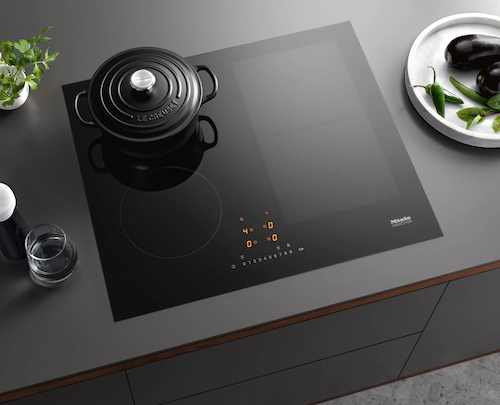
Induction cooking can accelerate the shift towards more sustainable energy practices by reducing dependency on fossil fuels, supporting renewable energy sources, and enhancing electricity grid operations.
Reducing Reliance on Fossil Fuels
When you switch to induction cooktops, you’re contributing to a decreased demand for fossil fuels. This change matters because induction cooking utilizes electricity and can be powered by renewable sources, unlike traditional gas stoves.
Supporting Renewable Energy Integration
The adoption of induction cooking acts in harmony with renewable energy integration. For instance, in certain systems, induction might draw power from solar panels during peak sunlight hours. This way, you’re not just cooking with a more efficient method but also leveraging clean and abundant energy.
Boosting Electrical Grid Stability and Flexibility
By opting for induction cooktops, you contribute to the stability and flexibility of the electricity grid. With advanced power management features, induction cooktops can adjust to varying power supplies and demand more readily.
This is essential for modern grids that integrate intermittent renewable energy sources. An induction cooking system in a study was shown to work alongside alternating current (AC) mains and photovoltaic (PV) arrays, facilitating better grid management.
Exploring Innovations and Cost in Induction Cookware

Technological Integrations
As you seek smarter kitchen solutions, induction cookware is keeping pace with technological integrations.
- Fast and Responsive: Induction heats the cookware directly, so you get instant heat adjustments. No waiting for coils to heat up!
- Precise Temperature Control: Digital controls with specific temperature settings make it easy to get perfect results, even for delicate dishes.
- Multiple Cooking Zones: Cook with different sized pots and pans at the same time using multiple heating zones.
- Timer Functions: Built-in timers let you set cooking times and walk away without worrying about overcooking.
Safety Features for Your Peace of Mind
- Cool Cooktop Surface: The cooktop stays cool, reducing the risk of burns, especially in homes with children or pets.
- Automatic Shut-off: The cooktop turns off automatically if no cookware is detected or after a set time, preventing overheating and saving energy.
- Pan Detection: The cooktop only works when compatible cookware is on it, ensuring no wasted energy or accidental heating.
- Residual Heat Indicators: Even though the cooktop stays cool, these indicators let you know if a cooking zone is still hot, preventing accidental burns.
Price Trends and Accessibility
The price of induction cookware is a critical factor in your purchasing decision. The market is witnessing a trend of decreasing costs and increased accessibility. Although the initial cost may seem higher compared to conventional cookware, the long-term savings on energy bills and durability make induction cookware an economically smart choice for you.
Challenges and Considerations
When adopting induction cooking as part of the energy transition, it’s important for you to consider several key factors. Learning these concepts will empower you to make well-informed choices regarding this technology.
Initial Cost and Affordability
The upfront cost of induction cooktops tends to be higher than traditional gas or electric ranges. This is due to the advanced technology and materials required for manufacturing induction units. How much you spend will affect whether induction cooking is a good fit for you.
Compatibility with Existing Cookware
Induction cooktops require cookware with magnetic properties. If your existing pots and pans are not compatible, you’ll need to invest in new induction-ready cookware.
Ensure that your cookware has a flat bottom and is made of ferrous metals like cast iron or magnetic stainless steel.
Induction Basics
Switching to induction cooking might take a little getting used to since there’s a bit of a learning curve involved. You’ll need to understand how induction heating works and differs from conventional cooking methods. Greater public awareness and education efforts can address misconceptions and demonstrate induction technology’s benefits and proper use.
Case Studies and Real-World Applications

Exploring the real-world applications and successes of induction cooking reveals its potential in energy transition efforts and how it has been embraced in various settings.
Commercial Kitchens Leading the Way
Commercial kitchens are harnessing the speed and precision of induction cooking to improve their operations. Renowned chefs and restaurants have noted that induction technology can produce a consistent culinary outcome, with the added benefit of a cooler and safer kitchen environment.
Such equipment is remarkably efficient, with up to 90% of the consumed energy transferred to food—far superior to traditional cooking methods.
Impact on National Energy Consumption Patterns
A comprehensive study indicates that by adopting induction cooking, countries could reduce their reliance on fossil fuels and lower greenhouse gas emissions. This is because traditional cooking methods contribute heavily to energy consumption.
The energy efficiency of an Induction Cooktop Analysis concluded that the electromagnetic induction process minimizes heat loss, thereby consuming less power and offering potential utility savings on a national level.
Here’s an additional video on why chefs embrace induction cooktops.
By: CBS Boston
Induction Cooking: Transforming Kitchens, Energizing Sustainability
Induction cooking transforms modern kitchens with its unmatched efficiency, precision, and style. This technology offers faster cooking times, precise temperature control, and a cooler kitchen environment, benefiting amateur and professional chefs.

With induction cooking, we bid farewell to the limitations of traditional stovetops and welcome a new era of efficiency, safety, and environmental consciousness. By harnessing electromagnetic energy to heat cookware directly, induction cooking minimizes energy waste, reduces reliance on fossil fuels, and supports the integration of renewable energy sources.
Moreover, advancements in induction cookware design, long-term costs, and increased accessibility ensure that this technology is not only cutting-edge but also practical for everyday use. From smart features to durable construction, induction cookware continues evolving to meet modern kitchens’ demands.
As we look to the future, the widespread adoption of induction cooking promises to revolutionize how we cook and approach energy consumption and sustainability in our homes and communities. Embracing induction technology is more than just upgrading your kitchen—it’s a step towards a greener, more efficient, and more delicious future.
Frequently Asked Questions
What Are the Energy Efficiency Benefits of Induction Cooktops Compared to Traditional Cooking Methods?
Induction cooktops offer significant energy savings over gas or electric stovetops. This is because they heat cookware directly through electromagnetic fields, reducing heat loss. This results in faster and more even cooking, with less energy wasted.
How Do Rebates and Incentives Under the Inflation Reduction Act Affect the Adoption of Induction Technology?
Incentives under the Inflation Reduction Act aim to make induction technologies more affordable. This encourages more households to transition to energy-efficient cooking, which can lead to long-term savings on energy bills.
Where Does the Energy Star Certification Fit in the Context of Induction Cooking Appliances?
When a cooking appliance gets that Energy STAR certification, it means it’s met some pretty tough energy efficiency standards set by the US EPA. This makes it easier for folks like us to spot appliances that save us some cash and do their bit for the environment by using less energy.
Find Us on Social Media
Facebook: VeganGlobetrotter Join us on our Facebook page, VeganGlobetrotter, where we share mouthwatering plant-based recipes and tips to inspire your vegan lifestyle.
Instagram: _veganglobetrotter Follow us on Instagram at _veganglobetrotter to embark on a visual journey of delectable vegan dishes.
Pinterest: theveganglobetrotter Dive into the world of plant-based goodness and wellness with our Pinterest account, theveganglobetrotter.
Twitter: VeganGlobetrot Stay up-to-date with the latest vegan trends, insightful articles, and exciting updates by following us on Twitter at VeganGlobetrot.

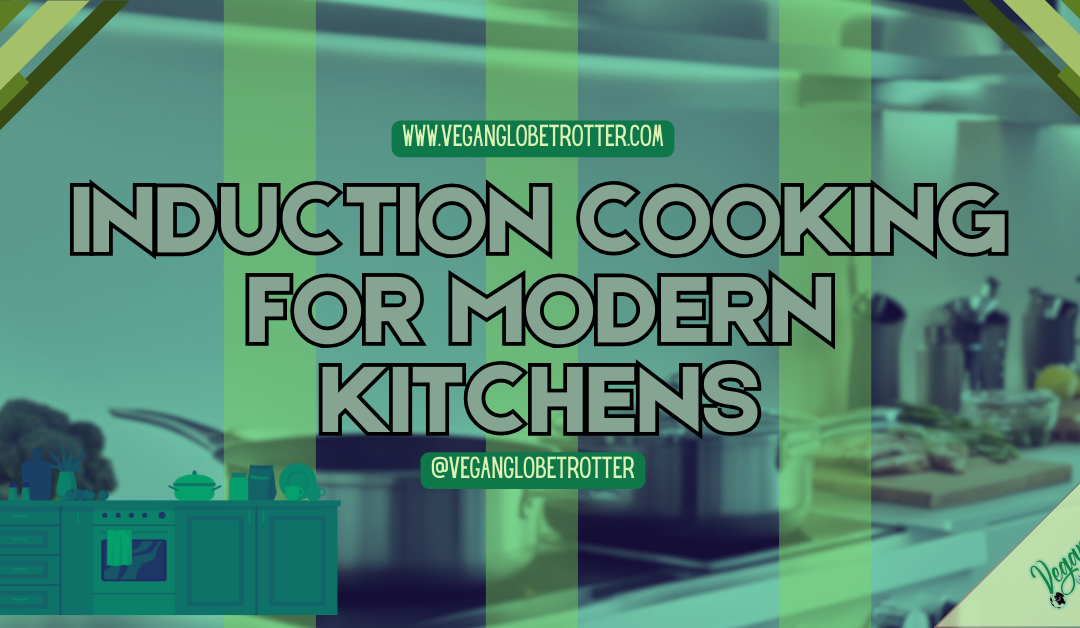

Don't miss out
when new recipes and information are added!
Join our newsletter for free recipes,
healthy living inspiration, and special offers
You have Successfully Subscribed!